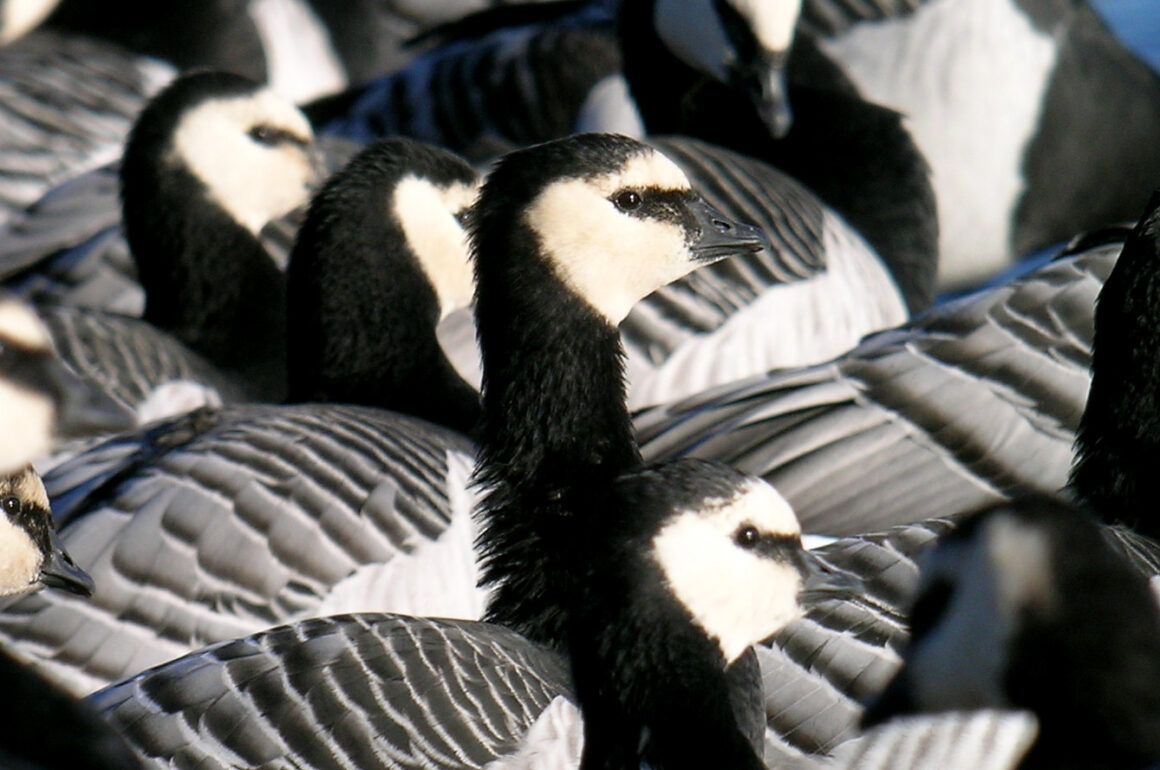
Serious birders may have an obsessive interest in birds, but one thing they universally don’t like are birds which, they believe, aren’t properly wild. It’s taken a long time for the purists to get used to the numerous Red Kites we now have in England, all descended from captive-reared birds that were released initially over 30 years ago. Pheasants, released in great numbers for shooting, are regarded with disdain, while nobody has a good word to say about the flocks of Rose-ringed (Ring-necked) Parakeets that now squawk noisily in all the London parks.
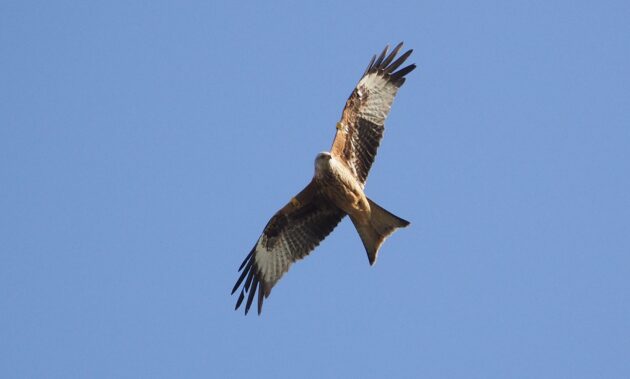
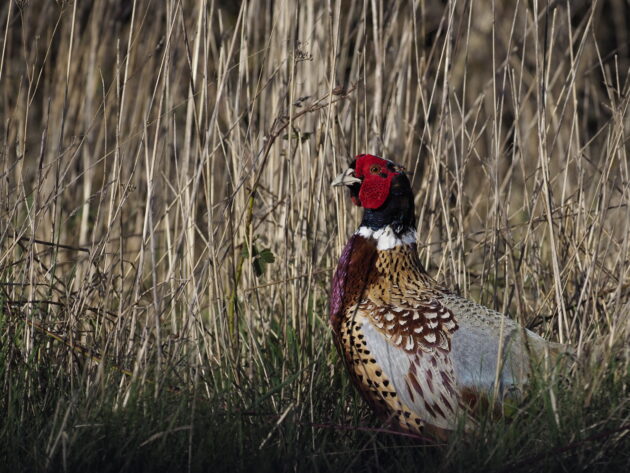
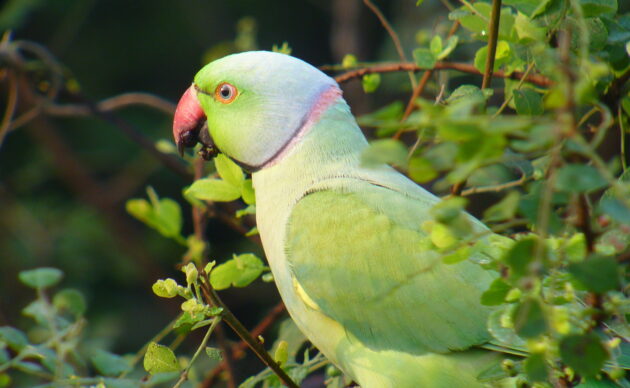
There’s one problem with this approach, as it can lead to birds being ignored. Here in Suffolk we now have impressive wintering flocks of Barnacle Geese, often numbering 1000 birds or more. The purist birders take little interest in them, regarding them as no more interesting, or exciting, than the flocks of Canada Geese that have long been established in the county. According to Suffolk Birds 2022 (the annual bird report), “the birds in the county are part of a naturalised population”. However, though there have been records of feral Barnacle Geese nesting in Suffolk for many years, the number of pairs remain small, and certainly not sufficient to account for flocks of the size now seen every winter. Significantly, in 2022 there were no records of these geese nesting successfully anywhere in Suffolk.
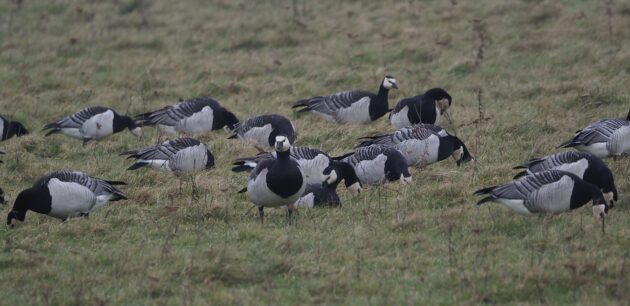
So where do these geese come from? My guess is that they are birds that move across from the Netherlands for the winter. The European Breeding Bird Atlas 2 makes interesting reading. “Originally confined to the Arctic, breeding [of Barnacle Geese] is now confirmed throughout much of the Baltic coast S North Sea. This change is evident for instance in the Netherlands, where the growing resident Dutch population is considered to be drawn from birds breeding around the Barents Sea and wintering in the Netherlands.” It goes on to say that the Dutch population is estimated at 16,000-22,00 pairs. The Atlas was published in 2020, so these numbers may have been grown since then.
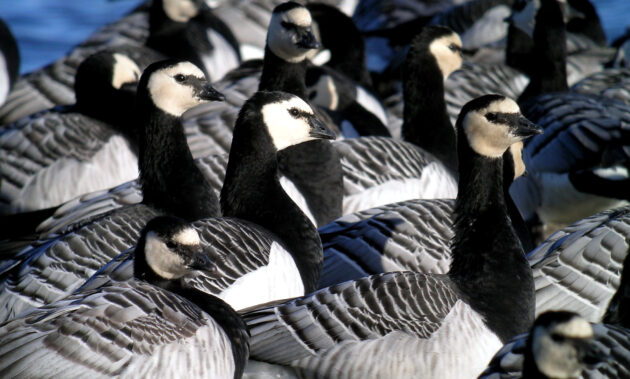
The Atlas attributes “the rapid increase of Barnacle Geese to several factors”, of which the most important seems to be improved protection of the Svalbard and Russian populations. As these geese spread naturally as nesting birds through the Baltic, then into Denmark and Holland, it’s hardly surprising that they should appear in Eastern England. It’s less than 200 miles from the Suffolk coast to that of the Netherlands, an easy flight for a powerful migratory bird such as this goose.
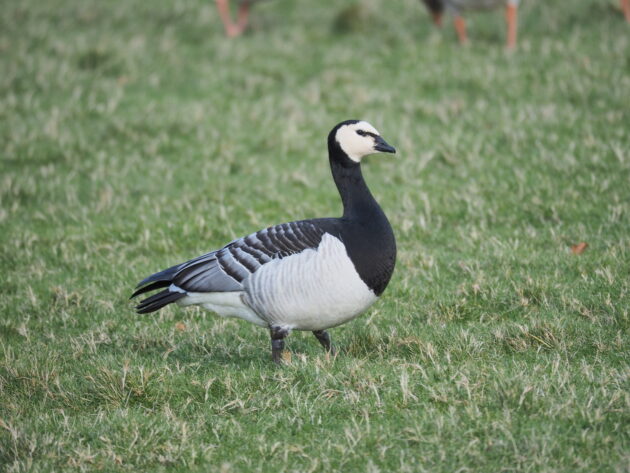
According to the Atlas, the combined population for the Russian, Baltic, Netherlands population is around 770,000 individuals, which is an awful lot of geese. I’ve watched migrating flocks of Barnacles streaming past the Baltic island of Öland in the autumn. The numbers heading south are huge, so much so that you think that the next day the flocks will be smaller, as there can’t be many more to come. You are wrong, for the next day, and the next, the flocks keep flying past in undiminished numbers. It’s spectacular stuff.
Intriguingly, the population of Dark-bellied Brent Geese has also increased hugely during the same period, but the birds show no signs of colonising Europe, and there are hardly any records of them nesting away from the arctic tundra. (A pair did lay infertile eggs in Iceland in 2018, but that’s about the only record I can find). Significantly Brent have never bred prolifically in captivity, unlike Barnacles.
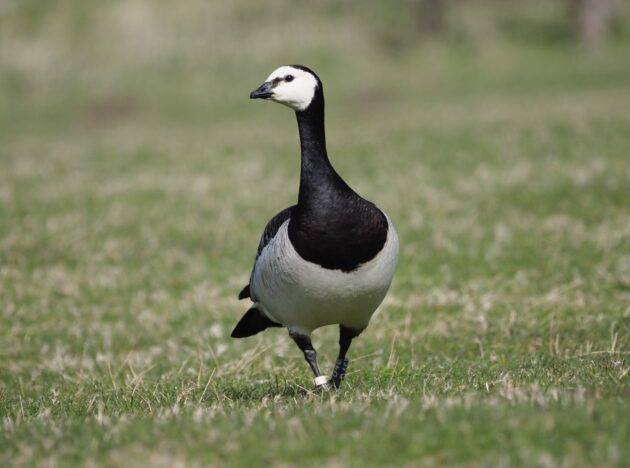
There’s a certain magic in the migratory geese that fly to us every year from the arctic. Birds that have bred in Holland and simply flown across the North Sea may lack the same appeal, but it does seem certain that they are descendants of pure wild birds, not from captive stock. Barnacles are lively, entertaining geese, attractively marked and with neat proportions. I for one really enjoy seeing the flocks that now winter on the Suffolk coast, and feel that it’s high time that we took more interest in them and their movements. In our neighbouring county of Norfolk there’s an increasing population of nesting Barnacles, most of which are ringed. Despite trying, I’ve failed to see rings on any of the birds in the Suffolk flocks. Dismissing them as “naturalised” doesn’t do them justice.











Barnacle geese suffered a lot from the bird flu pandemic the last few years. Their numbers are still impressive, fortunately. It’s a very pretty bird. So is the parakeet, the Nile goose, the mute swan. Twitchers “go for” an out-of-range bird, not being natural at all but ignore new additions to the avifauna. Seems a bit too puritan.
Thank you so much for this wonderful piece! Barnacle Geese are, indeed, gorgeous, and I’d love to see one. You make a good point about naturalized birds. Here in the Pacific Northwest of the US, in winter and spring we have Black Brant who nest in Alaska, so your British names of “Barnacle Goose” and “Brent” sound quite unusual. Here’s what I put together about our Brant: https://rainshadownorthwest.com/2022/04/10/beautiful-banded-brant/
Whoa, say what? Admittedly, Barnacle Geese have lost some of their arctic magic with their natural spread to central and western Europe, and with their becoming rather abundant. But why on earth would British birders not appreciate them? “Naturalized population”? Nope, nope … to the best of my knowledge, this spread was entirely natural. These are genuine, wild birds. During times of Egyptian Geese, and Canada Geese and Ruddy Shellducks overrunning Europe, it is easy to see why birders don’t get too excited about the spread of waterfowl that’s also frequently kept in captivity. But come on … these are genuine.
What a beautiful bird. I always enjoy your entries David:)